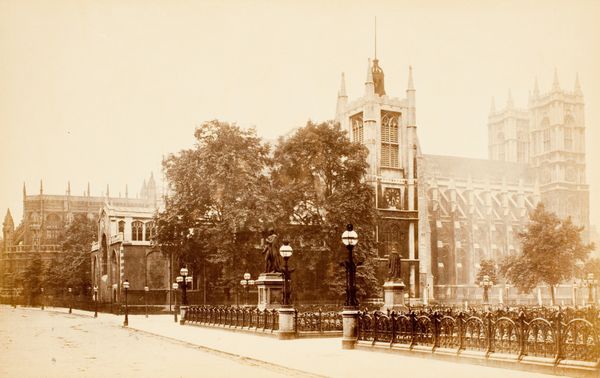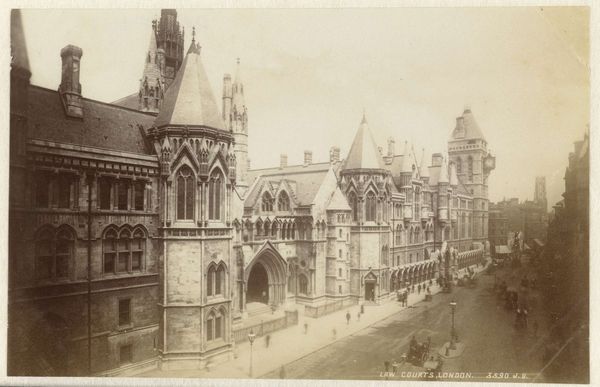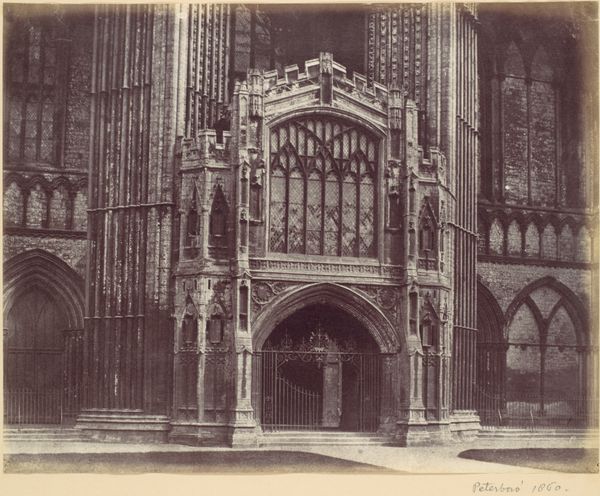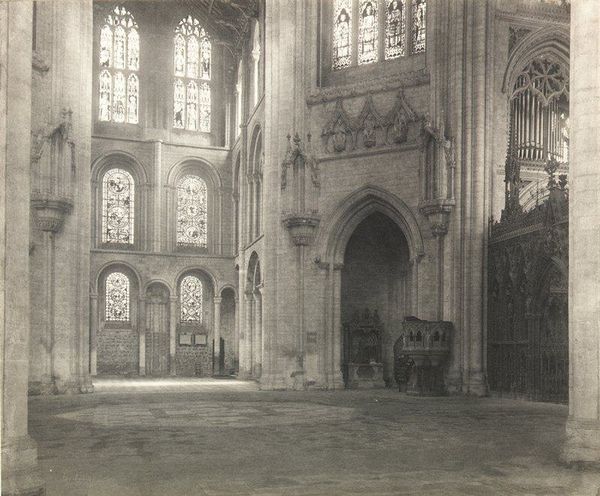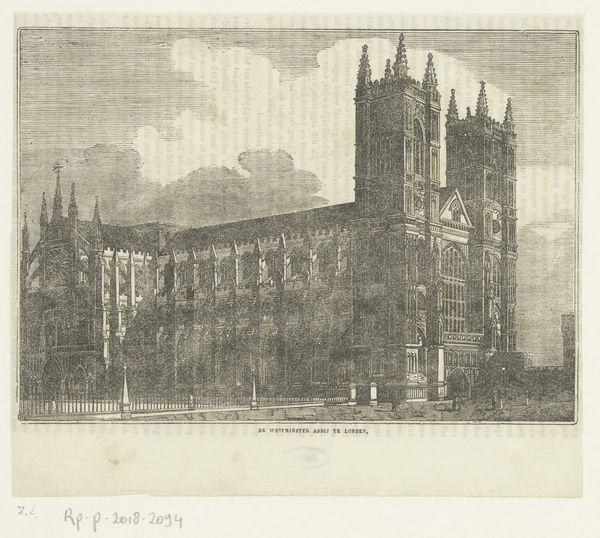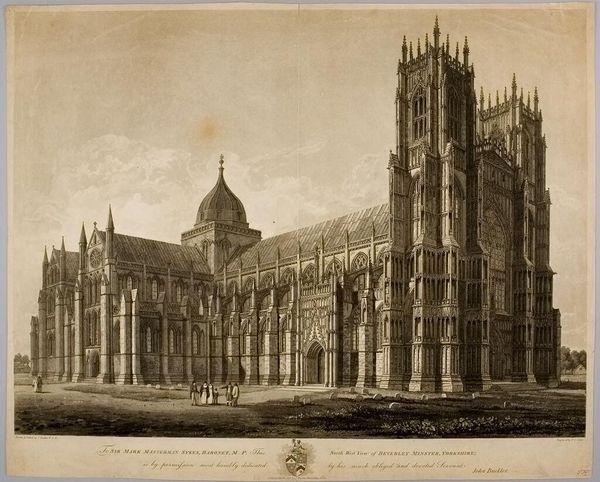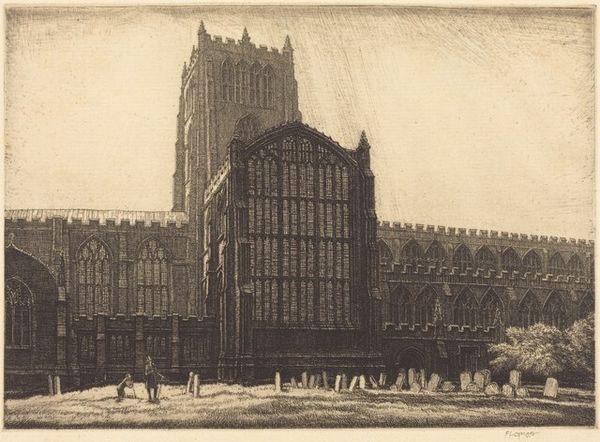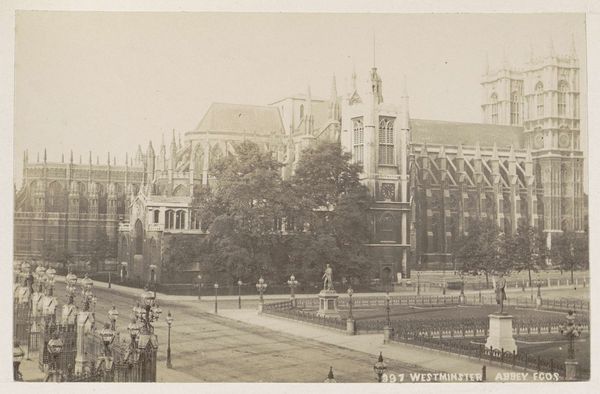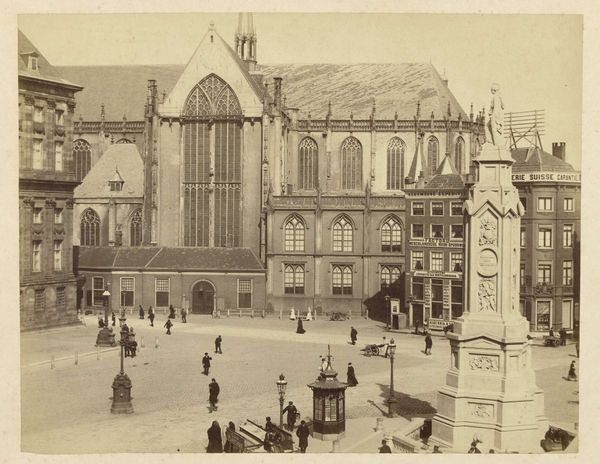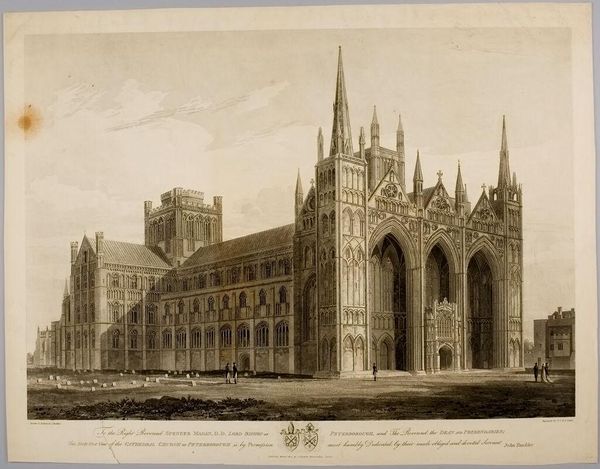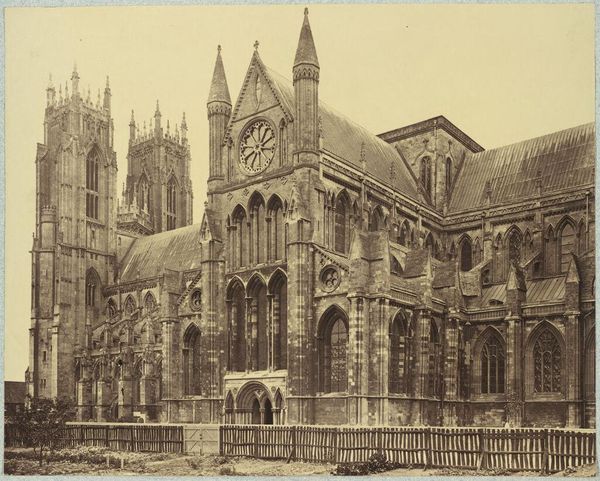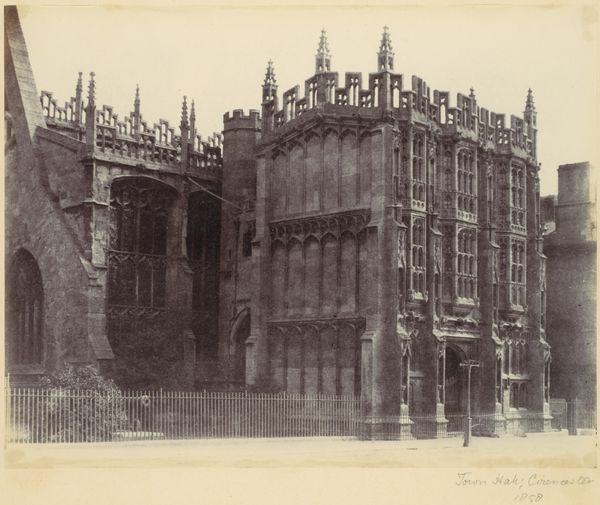
Dimensions: sheet (trimmed to image): 9.6 x 7.3 cm (3 3/4 x 2 7/8 in.) mount: 12 x 9.1 cm (4 3/4 x 3 9/16 in.) mount: 32.5 x 25.2 cm (12 13/16 x 9 15/16 in.)
Copyright: National Gallery of Art: CC0 1.0
Curator: Here we have Frederick H. Evans' "A View of Ely Cathedral," a gelatin-silver print taken in 1899. Editor: The photograph immediately evokes a sense of awe. The cathedral's imposing structure dominates the scene, softened slightly by what appears to be the out-of-focus foreground. The stark, muted tones enhance the historic weight. Curator: Indeed, Evans, a prominent figure in the Pictorialist movement, consciously utilized photography to evoke specific aesthetic and emotional responses, moving away from simply documenting reality. The deliberate blurring, the tonality, and even the viewpoint all contribute to a romantic vision of the cathedral. Editor: And I would add that his vision participates in constructing an understanding of the past through idealized images, which raises questions about the accessibility and interpretation of history and the cultural institutions that are their guardians. Notice the strategic placement of the gates between the cathedral and the viewer; this seems symbolic to me, like there is an impediment in entering its history. Curator: Interesting point. Pictorialists often aimed to elevate photography to the status of art, competing with painting by demonstrating artistic manipulation and interpretation, frequently drawing inspiration from literary Romanticism, so this photo partakes of that trend. Evans certainly believed in the artist's right to interpret the subject. He visited Ely many times, taking hundreds of photographs, each slightly different in lighting and composition. Editor: Which emphasizes the element of human, biased, vision. While there are two figures standing slightly outside the gate, they almost disappear in the mass of forms; these seem to speak to a contemporary audience—like the artist knows they are also spectators and interpreters of this historic architecture. And it really drives home the discussion around elitism and exclusionary representation. Curator: That tension certainly underlies the aesthetic aims. Editor: Well, reflecting on Evans' vision and the issues it raises about historical access makes one think about what stories we choose to tell through art and what voices are amplified in that process. Curator: A reminder that every artwork carries a historical consciousness. Let's move to the next piece.
Comments
No comments
Be the first to comment and join the conversation on the ultimate creative platform.
